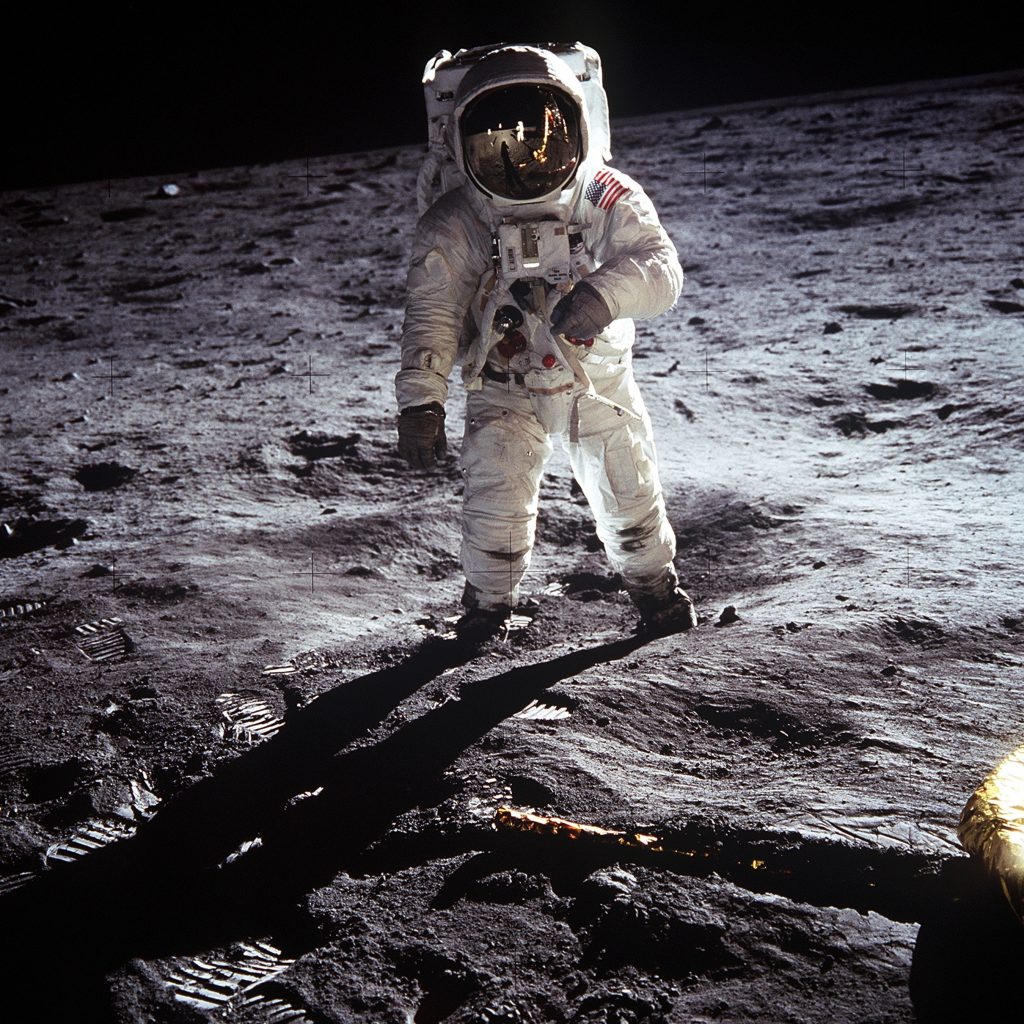Celebrating the American Spirit on the 50th Anniversary of the Moon Landing
December 24, 2020


On the evening of July 20, 1969, nearly all Americans gathered around their television sets to watch Neil Armstrong take “One small step for a man, one giant leap for mankind.” President John F. Kennedy had declared eight years earlier that America would put a man on the moon before the decade was over. Many thought it would be impossible. Yet a mere 66 years after the Wright Brothers first took flight, all the world watched history unfolding before their eyes.
“The moon landing goes to show that when we put our minds to it, we can accomplish anything as Americans,” said Logan Rex, a 2018 Ashbrook Scholar alumnus. Logan works at the Armstrong Air and Space Museum, which is home to many artifacts, including a moon rock brought back by Neil Armstrong on Apollo 11, Armstrong’s backup spacesuit that was aboard the Eagle lunar module, and the Gemini 8 capsule that Armstrong piloted during his first spaceflight in 1966. Recently promoted to exhibit specialist, Logan will design future exhibits, create interpretive labels, and re-examine present exhibits for refurbishment.
For Logan, working at the museum is, “the culmination of a lot of different dreams.” Logan grew up in Lima, Ohio, just fifteen miles from the small town of Wapakoneta where Neil Armstrong grew up and where the Armstrong Museum is located. Growing up, Logan learned to be grateful for America, but he confesses: “I never really knew why I should be grateful until my time at Ashbrook.” Logan had a very strong interest in history and enjoyed trips to the Armstrong Museum. He would play “curator” at home, wear white gloves and display “artifacts” in his bedroom with information plaques.
Logan’s study of American history as a student in the Ashbrook Scholar program brought into view the importance of the American experiment in self-government. “I learned that there is much more to the American idea than I previously understood,” Logan said. At the same time, his childhood passion for history and museums solidified into a career in museum work. “My Ashbrook education has been instrumental in helping me pursue my career.”

Logan says that his favorite part of working at the museum is “teaching the younger generation about the importance of space exploration, especially during the space race.” Logan understands the scientific and technological achievement of actually landing a man on the moon. But because of Ashbrook, he also understands the historical, political, cultural, and ultimately human significance of the moon landing. “Without a story and without the ideas, these are simply artifacts behind glass,” says Logan. “The story is what matters, showing people what the artifacts represent.”
One part of the story told at the Armstrong Museum is that of a small-town boy with a fascination for flying who grew up to be the second member of his family to attend college and the first man to walk on the moon. Another tells how the ingenious NASA scientists and engineers worked day and night to design the technology to make the landing possible. Still more of the story is made up by those ordinary Americans who watched in awe as man made his first forays into space, confident that if anyone could put a man on the moon, the Americans could. Mostly, the moon landing is a story about the spirit of a people, a people who could proudly and confidently say as JFK did, “We choose to go to the moon.” Logan traces this optimistic spirit through the entirety of the American story, “You can draw a very nice line between the Founding and the moon landing. When we put our minds to it, we can be the best nation in the world.” This lesson resonates strongly throughout the Armstrong Museum, and according to Logan, in the hearts of young people as they leave the museum.
The moon landing came at a time when Americans desperately needed to be reminded of the American spirit. It brought Americans together at the close of a decade marked by multiple assassinations, race rioting, and the Vietnam War. It transcended a time of turmoil and gave Americans something to be in awe of and take pride in.
This year, the Armstrong Air and Space Museum is holding a ten-day celebration for the 50th anniversary of the moon landing. Thousands have come to remember the Apollo 11 mission. Across the country, millions celebrate the historic achievement. Logan relishes the opportunity to celebrate the moon landing. “It’s something that unites us as Americans,” says Logan, which he thinks is especially important given our current political climate. “Fifty years later, many challenges lie ahead for America. But we shouldn’t shy away from them. We can teach this generation that given a challenge, Americans can meet it.”

